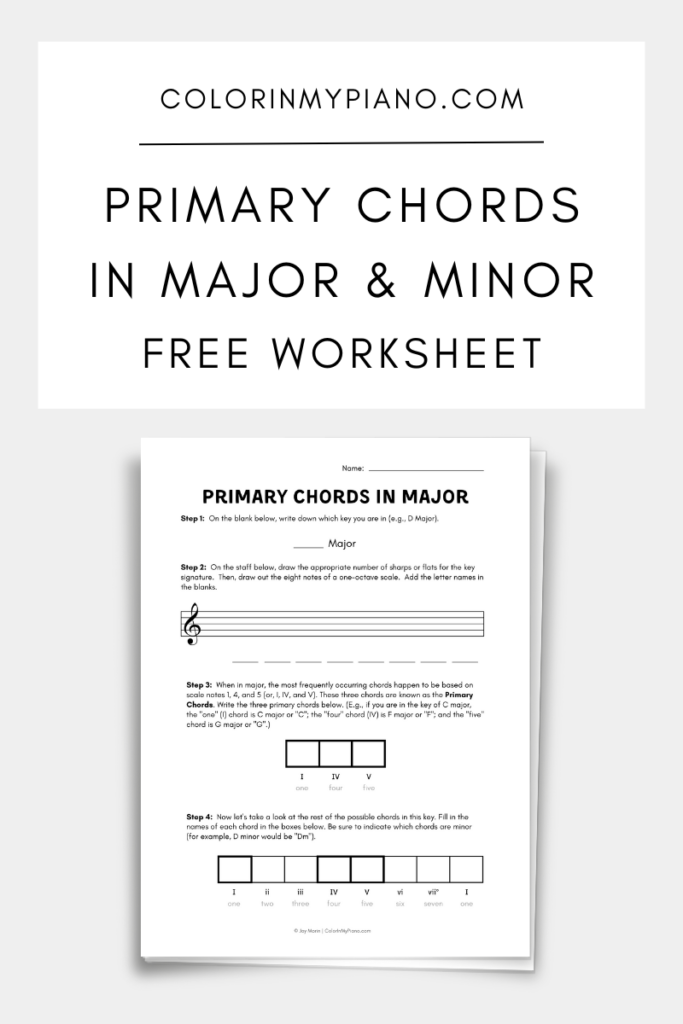
Do you like to have your piano students analyze and label the chords in their pieces? I do!
I recently had the idea to create this pair of worksheets specifically for a couple of my students to assist with process of analyzing a piece. The worksheet is to be completed in the same key as their piece, before commencing their analyzation. The idea is to help students think ahead of time about what chords they can expect to see/hear in their piece — which can help make the analysis process easier.
This is a two-page set of worksheets: one for working in major keys and one for minor keys. The worksheets are basically identical other than the fact that the minor page reminds students they need to raise the leading tone.
The steps on the worksheet lead the student through thinking about the key signature, the notes of the scale, the primary chords (I, IV, and V) in that key, and then finally all the diatonic chords in that key.

I remember as a young student having trouble wrapping my mind around the diatonic chords and understanding the significance of going through the process of drawing them all out in order. My hope with this theory worksheet is that the “why” is provided upfront — specifically, the fact that the primary chords are those that tend to occur most frequently in Western music — and that the worksheet steps are clear and logical. This worksheet is perhaps best completed at the piano — where students can play and hear the notes and chords they are writing.
So far so good — the students I’ve used this worksheet with have enjoyed using it as a tool alongside the pieces they are studying!
If you’d like to give this worksheet a try with your own students, download the free PDF below or on the Printables > Worksheets page.
 Primary Chords in Major & Minor (99.2 KiB, 788 hits)
Primary Chords in Major & Minor (99.2 KiB, 788 hits)
Enjoy!


Thank you Joy. This comes at just the right time as I’ve been trying to do more analysis with my students!!
I’m glad for the good timing, Nancy!
Nice worksheet set , thank you for sharing!
You’re welcome, Yelena!
Hello Joy! Thank you for sharing your ideas. Everything is useful.
Your children are sooo cute!!
Aw, thank you, Yuko!
Thank you for another great worksheet! Your worksheets are always so good to use, and I believe it will help my students a lot!
Glad you can use this worksheet with your students! Thanks for your comment.
Hi Joy – I don’t comment very often but I want you to know that I think you’re absolutely amazing with all of the things you do as a music teacher for your students and for all of us fellow music teachers out here. I printed out this worksheet as I think it’s a great visual for understanding all of the chords within a major or minor key. Thank you for all you do for all of us! – Karyl
You’re very welcome, Karyl! Thank you so much for taking the time to leave a comment — I appreciate hearing from my readers!
Joy,
Found your worksheets so timely for several of my students, thank you very much!
I also stumbled upon your essay on audiation. Superb! Such a clear and succinct statement of this often-neglected aspect of music learning. I had first heard the term only recently, myself, so I appreciate your detailed explanation.
Glad you are enjoying the worksheets, Maryjane! And I’m also glad you appreciated my article on audiation. It’s such an important skill for us to be thinking about educators, and you are right that it’s often neglected!